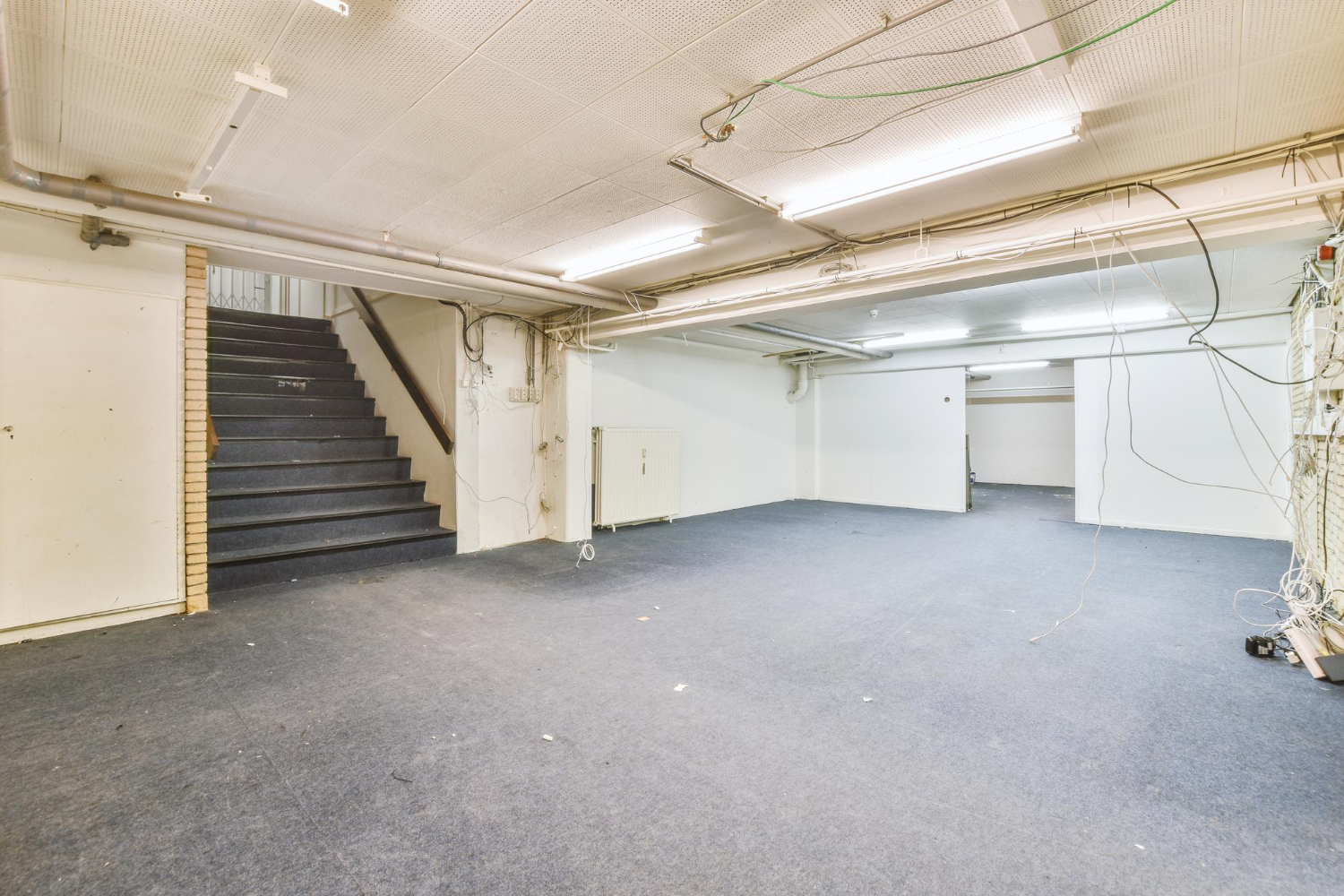A leaky basement isn’t just a small inconvenience. If left untreated, water seepage can damage belongings, weaken your home’s foundation, and invite mold into spaces where no one wants it. Keeping your basement dry is a year-round responsibility, especially during the summer months in Quincy when storms can come through quickly and dump a lot of water near your foundation.
Many Quincy homeowners don’t realize there’s a problem until water starts showing up after a heavy rain. Whether it’s a trickle through the wall or standing water near the baseboards, leaks are often signs of something bigger going on. Understanding what causes them and knowing where to start is the first step in protecting your home from larger problems later on.
Identify The Source Of Leaks
Before you can fix the problem, you have to find it. Water follows the path of least resistance, so the spot where it finally appears might not be where it came in. It’s helpful to do a close inspection after a heavy rain or when snow has recently melted, especially if anything looks or smells damp in your basement.
Here are a few common points where water likes to sneak in:
– Foundation cracks: These often form over time and may look small, but they can still let in a steady flow of moisture.
– Window wells: If the well fills with water and drainage is poor, it can leak through the surrounding space or glass.
– Pipe penetrations: Areas where plumbing goes through the walls or foundation might not be properly sealed.
– Basement wall joints or floor seams: Water can come up where the wall meets the floor or through expansion joints in the concrete.
– Leaky plumbing or interior sources: Not all leaks come from outside. Sometimes an internal pipe or appliance is the source of moisture buildup.
If you notice signs like dark spots on the walls, peeling paint, musty air, or puddles forming in corners, it’s likely there’s an issue worth investigating. A Quincy homeowner once found a consistent damp area in the far corner of their basement, assuming it was from groundwater. After bringing in help, they found a hairline crack near a window that only leaked during strong storms. Once that issue was fixed, the rest of the moisture dried up on its own.
Pinpointing where water’s getting in helps you choose the right fix. If you can’t detect the source or if it seems to be coming from more than one place, it might signal a larger problem that needs a full evaluation.
Improve Exterior Drainage
Even a strong foundation can only do so much if the ground around your home isn’t helping. Poor outdoor drainage sends large amounts of water right toward your basement, raising the risk of leaks every time it rains. Making some adjustments outside can prevent a lot of the trouble before it even has the chance to reach your home’s foundation.
Here are a few ways to direct water away and keep it from pooling up:
1. Regrade your yard
The soil around the base of your home should gently slope away to carry water off to other parts of the property. Over time, grading can settle or erode. Adding fresh soil and packing it down to recreate a slope can help move water where it belongs.
2. Fix or extend your downspouts
Clogged or poorly directed downspouts may dump water right next to your foundation. Extensions can carry it four to six feet out, drastically reducing how much seeps back in through the soil.
3. Install a French drain or exterior drain tile system
These systems involve a perforated pipe buried underground to collect and carry water away from your house. They work especially well in yards that tend to flood or collect standing water near the foundation.
4. Keep gutters clean
When debris builds up in your gutters, water overflows and lands near your foundation. Make it part of your routine to clear gutters out a few times a year, especially after heavy winds or when leaves are falling.
5. Watch your landscaping
Decorative borders, mulch beds, or paved walkways can unintentionally create low points or block proper drainage. Double-check that your outdoor spaces are working with gravity, not fighting it.
Creating strong exterior drainage takes time, but even simple updates like fixing a broken downspout or reshaping a mulch bed can make a big difference. Quincy summers bring their share of strong rainstorms, so making sure the water stays out of the way and off your foundation is one of the smartest preventative steps you can take.
Seal Foundation Cracks
Once water has a way in through the walls or floor, even a small crack can become a steady source of moisture. These cracks often form as houses settle over time, especially in areas with freeze-thaw cycles like Quincy. While a few hairline cracks on older homes are common, any visible break in the foundation is worth paying attention to if water’s starting to make it indoors.
Some cracks may look small on the outside but reach deep into the wall, making them more than just a cosmetic issue. Water can push through those spaces where concrete or mortar has weakened and find its way into your basement. If left unchecked, those leaks can spread or cause erosion around the opening.
Sealing foundation cracks is one way to stop water from sneaking past those weak spots. For very fine surface cracks, rubber-based sealants or hydraulic cement may offer short-term help. But if a crack is wide, goes through the wall, or keeps reopening, that’s probably a sign of movement and pressure that needs more than a surface patch.
Sometimes people try to fix these issues on their own using basic caulk or cement, but that often leaves hidden gaps behind the wall that keep letting water through. A professional will have the tools to assess whether a crack is minor or tied to a bigger structural concern. They can also apply high-pressure injection or carbon fiber reinforcement, depending on what’s needed to keep moisture out for good.
A homeowner in Quincy once thought their annual puddles were from poor yard drainage, but a closer inspection revealed stair-step cracks in the basement wall. Water wasn’t just coming over the top, it was oozing right through the blocks during every summer storm. Sealing those cracks professionally helped stop the leaks and gave them peace of mind during the heaviest rains.
Install A Sump Pump System
Sometimes even the best planning won’t keep all water out of your basement. That’s when a sump pump comes into play. These systems are built to catch groundwater before it has a chance to become a problem, especially in areas with high water tables or heavy rainfall. A sump pump collects excess water into a basin and then pumps it away from your home, usually through a buried discharge line.
Installing a sump pump typically involves digging a pit in the lowest part of your basement floor. That sump pit collects any groundwater or moisture that comes through the drain tile system or under the slab. Once the water hits a certain level, the pump kicks on automatically and pushes it outside, well away from your foundation.
These systems are great at keeping basements dry, but they need to be set up and maintained correctly. Power failures during a big storm can knock them offline, which is why many people also add a backup pump or battery system to give extra protection. The placement of the discharge line also matters. If it breathes out too close to the house or gets obstructed, you may end up just recycling the same water back toward the foundation.
Key elements of a well-functioning sump pump setup include:
– A properly-sized basin to collect incoming water
– A high-power pump suited for the size of your home
– A reliable check valve to stop water from flowing back in
– A discharge pipe that runs several feet from the home
– A backup system for added peace of mind during power outages
A sump pump can be one of the most effective tools to stop basement water issues in their tracks, especially during rainy Quincy summers. But the system works best when installed by someone who knows how to match the right equipment to your home’s specific setup. If the wrong pump is chosen or the line clogs later, you could still face flooding even with a system in place.
When It’s Time to Bring in the Pros
It’s easy for basement leaks to go from small trouble spots to large-scale damage if you put them off. Once you’ve spotted the source, tried to manage surface drainage, and made basic fixes, there are still times when the problem comes back or never totally goes away. That’s when it makes sense to get help from someone who knows how to handle moisture below grade.
A professional can spot the signs that point to deeper issues like shifting foundations, long-term water pressure, or poor construction choices that might be hidden behind your walls. They’ve got access to tools and techniques you won’t find at a hardware store. From interior drainage systems to advanced waterproof coatings, professionals understand how to permanently stop water in its tracks.
If you’re a homeowner in Quincy and your basement always smells musty, shows damp spots even during dry spells, or needs buckets every time it rains, you’re probably dealing with more than just surface trouble. By working with a basement waterproofing expert, you’re choosing a long-term fix instead of patching the same issue over and over again.
Keeping water out of your basement isn’t about doing one thing right. It’s about combining a smart approach outside with strong protection inside. When everything is working together, your home stays dry, safe, and ready for whatever summer storms throw at it.
To keep your basement dry and fully protected, trust professionals who are well-versed in tackling every moisture issue. At King Waterproofing & Foundation Solutions, we offer comprehensive solutions to address any concerns you may have. For expert basement waterproofing services in Quincy, let us help you create a dry, safe environment in your home. Experience peace of mind knowing that seasoned specialists are there to safeguard your sanctuary, whatever the weather may bring.


